Electric vehicles (EVs) have revolutionized the automotive industry by offering quiet, efficient, and environmentally-friendly transportation.
However, not all EVs are built the same. While some are paragons of dependability, others are plagued with issues that can frustrate owners and drive up costs.
Here’s a closer look at five EVs known for their minimal maintenance needs and five that have become notorious for endless problems.
Electric Vehicles With Minimal Maintenance
When most people think of electric vehicles (EVs), they focus on instant torque, quiet rides, and eco-conscious driving. But there’s another major perk that doesn’t get enough spotlight: minimal maintenance.
Unlike their gas-guzzling counterparts, EVs don’t need oil changes, spark plugs, or complex transmission repairs. With fewer moving parts and regenerative braking systems that ease wear on components, some electric cars can go years with little more than tire rotations and the occasional cabin air filter swap.
In this article, we’re zeroing in on the EVs that stand out not just for their tech or range—but for being the least demanding on your time, wallet, and toolbox. Whether you’re a low-maintenance driver or just tired of mechanic visits, these models have your back.
Also Read: 5 Trucks With the Best LED Bed Lighting and 5 With Dim Lamps
1. Tesla Model 3
The Tesla Model 3 is one of the most popular EVs on the market and, despite early production hiccups, has matured into a low-maintenance option.
Owners praise its longevity, especially when compared to internal combustion cars, thanks to fewer moving parts and robust battery management systems.
Its regenerative braking also extends brake life. Over-the-air software updates improve reliability without needing trips to the service center.
The 2025 Tesla Model 3 is a fully electric sedan offering impressive specs and features for drivers seeking performance, efficiency, and cutting-edge technology.

The most popular configuration is the Long Range 4dr Sedan AWD, which features an electric dual-drive powertrain and starts at an MSRP of $47,490. Depending on income, buyers may qualify for EV tax credits and rebates up to $8,000.
This all-electric vehicle delivers an estimated electric range of 346 miles, with a home charging time of 11.7 hours when using a 240V outlet. It comes standard with all-wheel drive, seats up to five passengers, and offers a cargo capacity of 24.1 cubic feet. Weighing in at 4,030 pounds, the Model 3 is built in the United States and includes a basic warranty of 4 years or 50,000 miles.
Under the hood—figuratively speaking—the base engine type is electric, paired with a 1-speed direct drive transmission. The suspension system features four-wheel independent suspension and a standard stabilizer bar, contributing to its balanced handling.
In terms of efficiency, the Model 3 boasts an EPA rating of 133 MPGe city and 122 MPGe highway. The Model 3’s dimensions are equally streamlined, with a length of 185.8 inches, overall width with mirrors at 82.2 inches, and without mirrors at 72.8 inches.
It stands 56.7 inches high, rides on a 113.2-inch wheelbase, and offers a ground clearance of 5.4 inches. It also boasts a tight turning circle of 38.4 feet and can accelerate from 0 to 60 mph in just 4.2 seconds, according to the manufacturer.
2. Chevrolet Bolt EV
Chevrolet’s Bolt EV is a standout in terms of dependability. Despite early battery recall concerns (which GM addressed), the Bolt has proven to be a reliable, no-nonsense commuter car.
It has a simple powertrain, efficient battery use, and a solid reputation for mechanical durability. Many owners report minimal visits to the shop outside of routine tire rotations and cabin air filter changes.
You simply can’t count the Chevrolet Bolt out. Despite the fact that General Motors’ original mainstream electric vehicle began to fall behind in fast-charging capability toward the end of its seven-year production run, it remained such an exceptional value that it ended up carrying the majority of GM’s EV sales in 2023.
Its popularity was so strong, in fact, that it managed to reverse its own cancellation after public backlash—a feat that not even the Camaro has officially achieved.
GM originally discontinued the Bolt due to its reliance on older EV and battery technology and, for a significant period, its lack of profitability. However, the Bolt is now poised for a return, and expectations are high that it will come back improved across the board. Here’s what we currently know about the revival of the Bolt.
The first-generation Bolt EV launched in 2016 as a 2017 model, developed by GM’s Korean engineering team and manufactured in Michigan. While it was initially criticized for lacking the performance of the Tesla Model 3—which was one of the few EV benchmarks at the time—it was designed from the outset to be a budget-friendly, practical compact car.
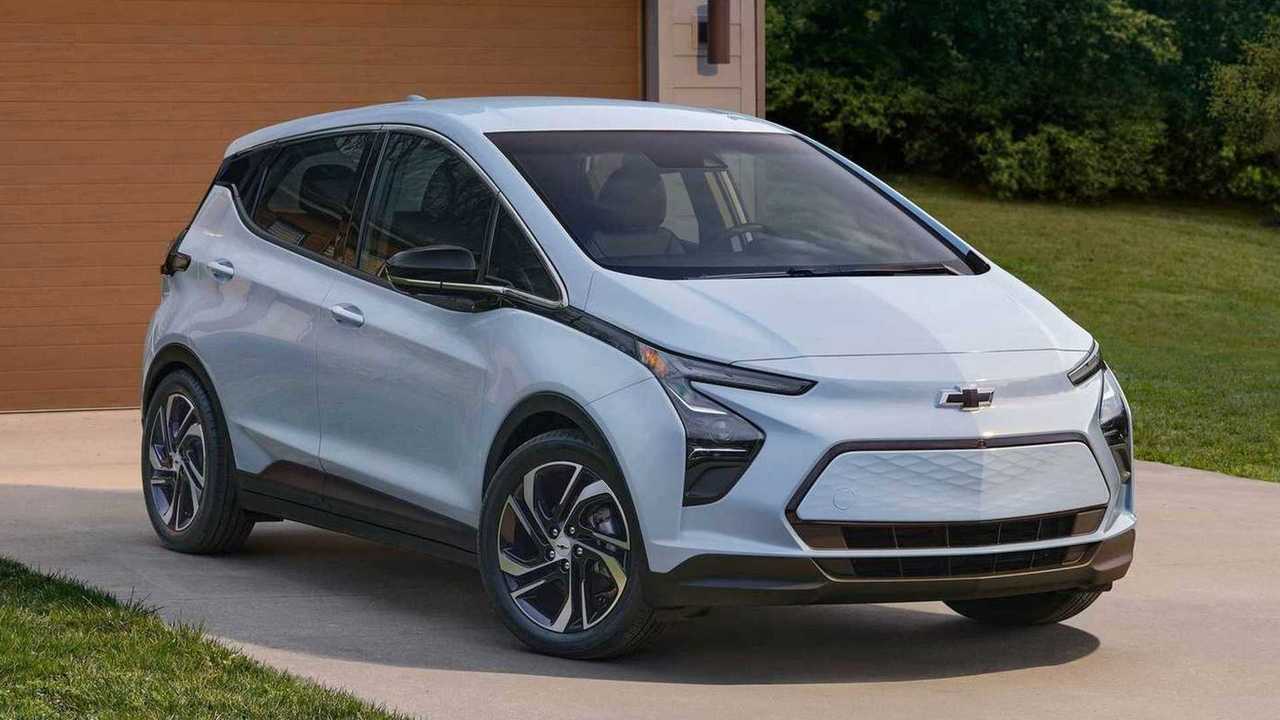
It succeeded in that role, cultivating a dedicated base of buyers. GM later introduced the slightly larger Bolt EUV for customers who needed more interior space and a crossover-style form factor.
By the time production ceased in December 2023, the Bolt EV and EUV had achieved EPA-estimated ranges of 259 miles and 247 miles, respectively, using GM’s now-retired 65.0-kWh battery pack.
With discounts and available tax credits, the Bolt was often available in the $20,000 range, helping it finish its final model year with impressive sales. However, one major drawback remained—its relatively sluggish 55 kW maximum DC fast-charging speed, which was far behind the charging capabilities offered by newer EV models.
In its return, the Bolt is expected to address some of the shortcomings of the original model. Rather than being a completely new vehicle, the upcoming Bolt EUV will be a significantly overhauled version built on GM’s Ultium platform.
It will feature updated battery and drive systems, modern safety and driver-assistance technology, and will include GM’s Super Cruise, the company’s hands-off, eyes-on semi-autonomous driving system.
By leveraging Ultium components already in use across GM’s other EVs, the new Bolt EUV should benefit from lower production costs while offering improved range and performance.
It’s also been confirmed that the Bolt will only return in EUV form; the smaller Bolt EV hatchback will not be making a comeback. GM’s decision reflects market trends—of the two, the EUV consistently outsold the hatchback, and U.S. consumers continue to move away from smaller vehicles in favor of crossovers and SUVs.
Furthermore, like every GM electric vehicle launching from 2025 onward, the new Bolt EUV is expected to come equipped with Tesla’s North American Charging Standard (NACS) port directly from the factory. This addition will grant Bolt drivers access to Tesla’s extensive Supercharger network, further enhancing the model’s practicality and convenience.
3. Hyundai Ioniq 5
The Ioniq 5 blends futuristic design with practical engineering. Hyundai’s investment in EV-specific platforms pays off with this model’s outstanding reliability record.
It benefits from advanced battery thermal management, reliable charging tech, and a well-engineered drivetrain that requires very little service over time. Warranty coverage is generous as well, providing peace of mind.
The 2025 Ioniq 5 is set to feature a Tesla-style charging connector, which means owners will be able to plug into Tesla’s Supercharger network nationwide without needing an adapter.
Along with this new charging capability, the 2025 Ioniq 5 will be equipped with a higher-capacity battery. According to Hyundai, this upgrade delivers a slight increase in driving range — with the single-motor variant expected to reach an estimated 310 miles.
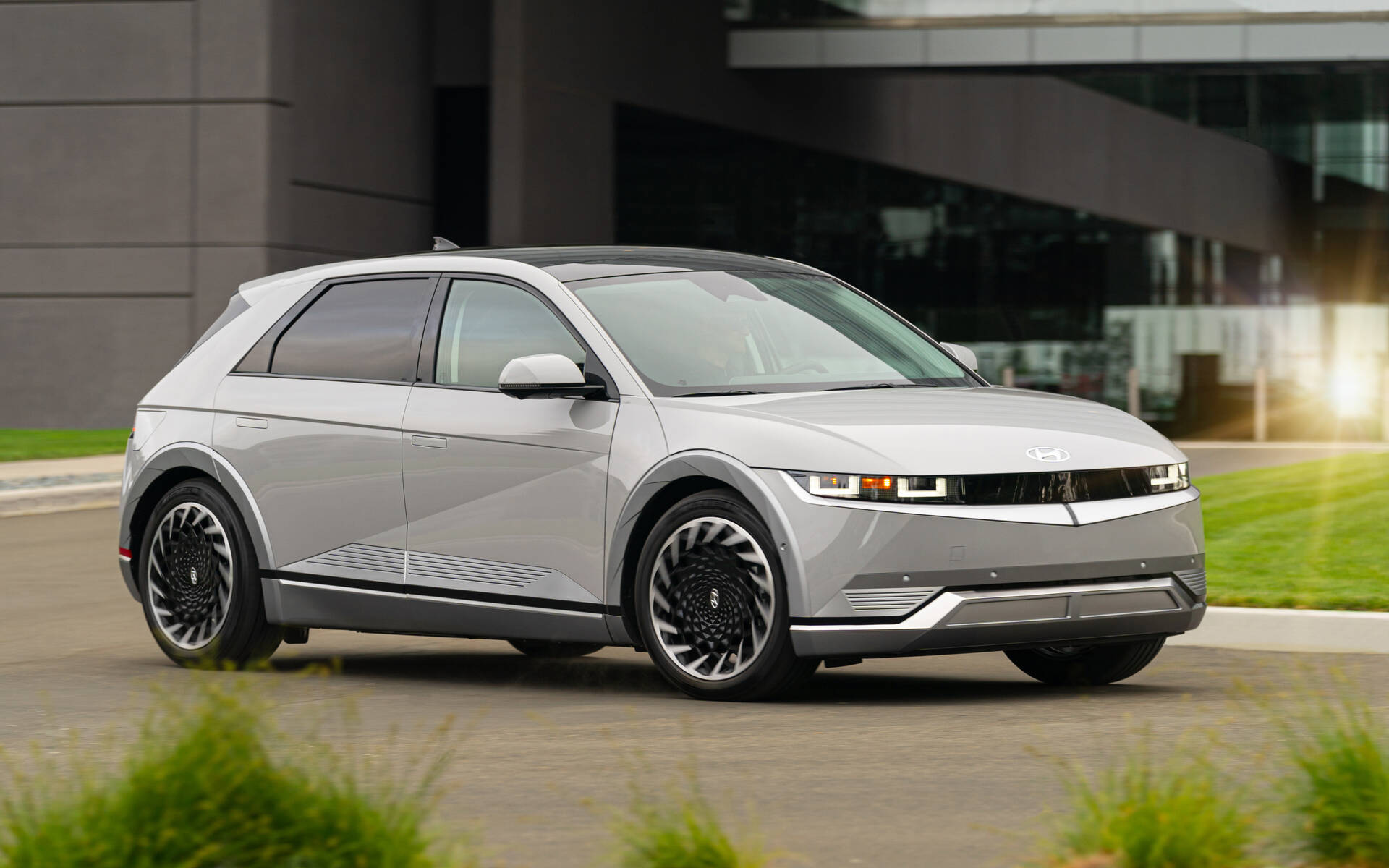
Beyond the battery and charging updates, the new Ioniq 5 receives a handful of subtle but meaningful enhancements. These include refreshed front and rear exterior styling, the long-awaited addition of a rear windshield wiper, and a relocated wireless charging pad for better accessibility.
Hyundai has also reconfigured the interior controls to improve usability, and the vehicle now comes with more advanced driver assistance systems along with wireless smartphone integration.
Another key change for 2025 is that all Ioniq 5 models will be manufactured in Georgia. Hyundai states that this shift in production location “should allow Ioniq 5 buyers to at least partially qualify for the federal tax credit.”
4. BMW i3
The BMW i3 may be quirky in design, but it’s built like a tank. Owners frequently highlight how few problems they’ve encountered even after years of driving.
With its carbon fiber reinforced plastic frame and simplified drivetrain, the i3 boasts a lightweight, durable design that holds up exceptionally well. Its solid construction and minimal required upkeep make it one of the most reliable EVs ever made.
BMW is rapidly advancing into the next chapter of its electric journey with the introduction of the Neue Klasse platform. This purpose-built electric architecture represents the brand’s strategic move toward a future defined by electric and digital mobility.
Leading this transformation will be the production versions of the Vision Neue Klasse sedan and X SUV concepts, which are expected to carry the i3 and iX3 badges upon their respective debuts in 2026 and 2025.
We’ve already had an early look at the iX3, which is scheduled to arrive next year as the United States’ first fully electric X3. Now, attention turns to the i3 and what it has to offer as the battery-electric sibling of the well-established 3 Series sedan.
Although it shares its name with BMW’s earlier i3 hatchback, the upcoming i3 is a completely new model based on the company’s freshly revealed Neue Klasse platform.
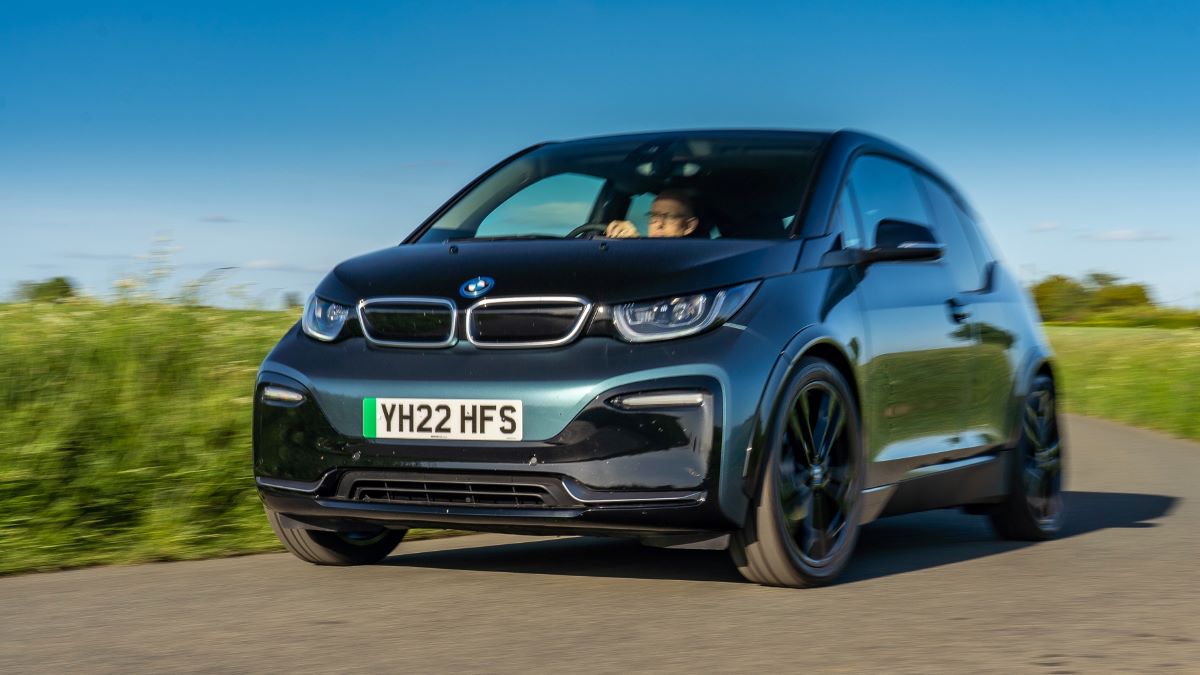
It represents a continuation of BMW’s dual-platform strategy, where electric vehicles like the i3 and iX3 are sold alongside their internal combustion engine counterparts—the 3 Series and X3—mirroring how the i5 coexists with the 5 Series and the i7 with the 7 Series.
The forthcoming i3 will join a broader family that includes the iX3, iX4, and iX5 SUVs, signaling a major milestone in BMW’s electrification roadmap.
The i3, previewed by the Vision Neue Klasse concept, features a bold design direction that aligns with other Neue Klasse models while also incorporating distinct visual cues. With the rapid rollout of these next-generation vehicles, BMW’s new design language is expected to remain modern and consistent from the introduction of the iX3 through to the final model in the series.
Designers have emphasized clean, simplified surfaces and bold lines, putting a spotlight on classic BMW elements such as the kidney grille and the signature Hofmeister kink on the C-pillar. The upcoming i3 will showcase a shark-nose front end, 21-inch wheels inspired by BMW Motorsport heritage, a streamlined dual-cowl hood, twin LED headlights, and aggressively styled lower air intakes.
Also Read: Top 10 Long-Lasting Cars That Get Over 30 MPG
5. Nissan Leaf (2nd Generation)
The second-generation Nissan Leaf, released in 2018, improved significantly over its predecessor.
It has fewer battery degradation issues, better cooling systems, and updated software. Owners commonly experience years of service with only basic maintenance needs.
It’s a great example of how lessons from earlier models can lead to a dependable EV that’s easy to live with.
This is the second-generation Nissan Leaf. You can get the basic details about it [here]. We took a trip to Las Vegas to see how it actually feels behind the wheel.
Hold on—there are a couple of key points to clear up first. Let’s talk about range. The 235-mile figure mentioned in the original piece was based on the overly optimistic EU test cycle.
The U.S. EPA, whose testing is far more grounded in real-world usage, rates the new Leaf at 150 miles. That puts it squarely in the “likely to cause range anxiety” category for just about anyone outside of a daily city commute.
Nissan emphasized—repeatedly—that this new Leaf is the direct result of customer feedback from current Leaf owners. While that sounds like a smart, customer-first approach, it actually highlights a limitation.
Most customers don’t know what they could have; they just know what they already use. So instead of pushing innovation, Nissan essentially played it safe and stayed within the boundaries of what people already expected.
The 2023 Leaf doesn’t break any new ground or introduce anything surprisingly innovative. And that’s a letdown—especially in the context of an all-electric vehicle where you’d hope for a bold leap forward.
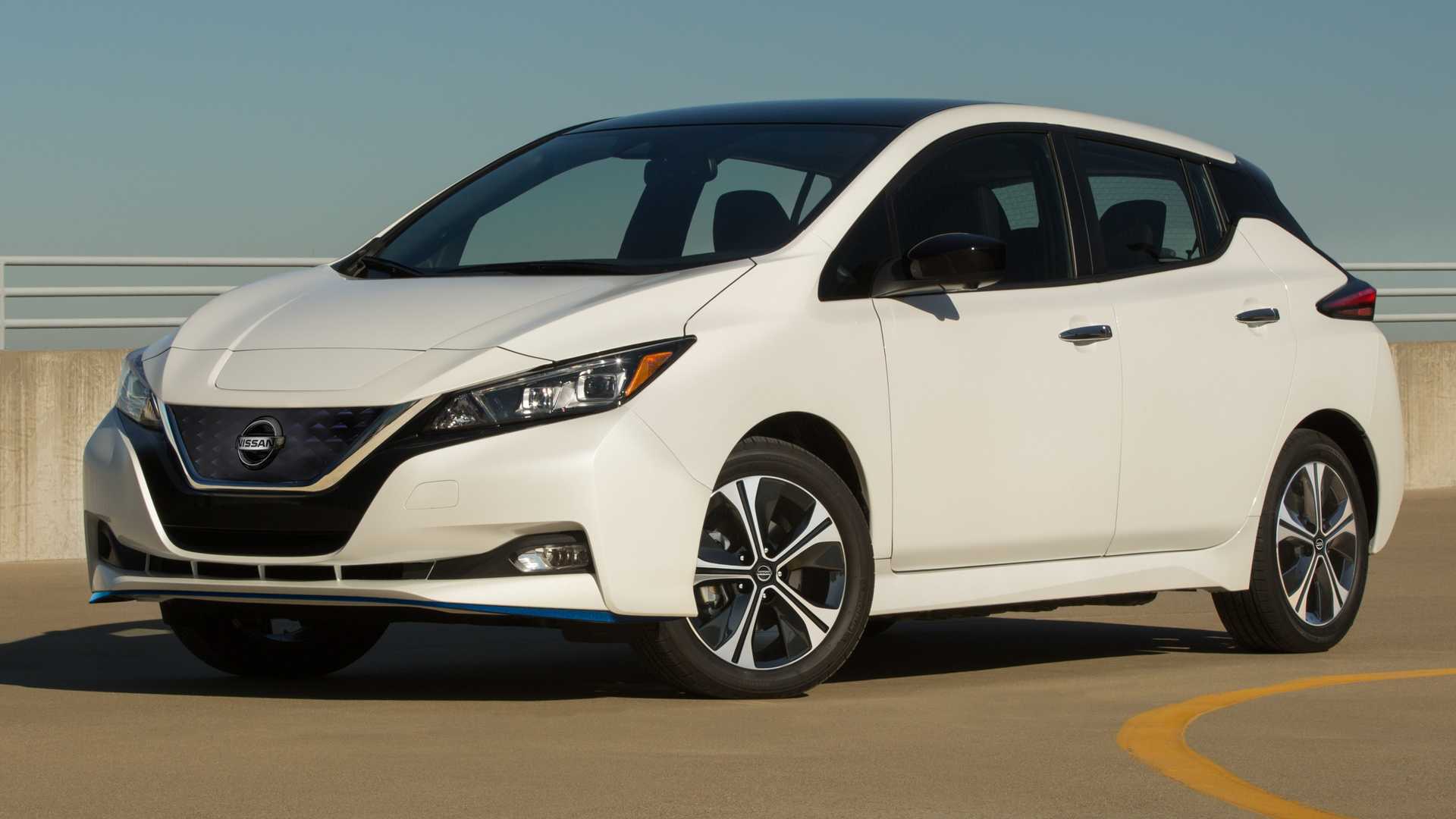
Like many of Nissan’s current offerings, it’s practical and useful, but it feels like the engineers deliberately removed any spark of excitement to keep it logical instead of emotional.
Actually, pretty well. The chassis is composed, quiet, and rides comfortably. The steering is solid. Acceleration is brisk—noticeably quicker than the outgoing model—even up to highway speeds, and the drive remains calm and refined throughout.
The test drive was limited to a couple of 14-mile loops, so there’s not much to say yet about long-term battery behavior, other than nothing weird happened. Overall, it’s capable and comfortable, with no glaring flaws and no standout brilliance. And apparently, that was exactly Nissan’s goal.
Yes—two things. First, there’s the e-Pedal. It allows for nearly one-pedal driving, where pressing down accelerates and lifting off engages regenerative braking along with the standard brakes. Unlike BMW’s i3 system, this setup blends both systems so you can even handle hill starts without juggling the brake and throttle. And if that kind of hands-off setup isn’t your thing, you can disable it.
ProPilot. It’s an optional driver-assistance suite that includes lane-keeping and adaptive cruise control—basically ideal for drivers prone to texting behind the wheel (though no one should be). Like with all new tech, it requires caution.
Yeah. The first pre-production Leaf we drove had a ProPilot system that pulled to the right when we briefly let go of the steering wheel—so aggressively, in fact, that it would’ve veered into another vehicle if we hadn’t corrected it. Nissan blamed a faulty sensor.
The second test car didn’t have the same issue, but the incident serves as a reminder that ProPilot—and systems like it—are not foolproof. Think of it as a backup, not a co-pilot.
On price, it starts off strong. The base Leaf is expected to land just below $30,000—right where the current model sits. But if you’re eyeing the SV or the fully loaded SL trim, you’re crossing into the $37,000+ range.
That’s Tesla Model 3 territory—albeit base-level—but still, the Tesla brand brings cachet that Nissan can’t match. Plus, the Model 3 offers more than 85 additional miles of range.
The Chevy Bolt, while not exactly a looker, outclasses the Leaf in almost every practical category—range, speed, performance. It starts a bit higher in price, but with dealer incentives, you can likely knock that down. Still, the real competition for the Leaf is what’s coming. Within a year, the EV landscape will be flooded with compelling new options from around the globe.
They are. That’s why they’ve already announced a more powerful, longer-range Leaf for release next year. But unlike Tesla, which can unlock performance with a software update, this new Leaf requires a whole different battery system that can’t be retrofitted.
So, credit to Nissan for transparency—but let’s be real, they’ve kind of undercut their own current model. Why commit to this version now when a better one’s just around the corner?
Nope. Not outright, anyway. Lease it. Leafs—like the Fiat 500e and other early EVs—depreciate like falling pianos. Don’t get stuck owning one in three years when battery life starts to fade and resale value craters.
Leasing lets you hand it back and either walk away or upgrade. For city driving, it’s a solid option. And for buyers in the UK, it’s worth noting the Leaf is built in Sunderland, so there’s a bonus if buying British-made matters to you.
Electric Vehicles With Endless Problems
Electric vehicles may be the future, but not every EV on the road is a masterpiece of engineering. For all the hype around zero emissions and cutting-edge tech, some models roll off the line with more problems than promises.
From glitchy infotainment systems and battery bugs to charging issues and build quality that makes you question the price tag — certain EVs just don’t live up to the marketing.
This article isn’t about bashing progress. It’s about calling out the electric cars that consistently frustrate owners, spend too much time at the service center, or fall short where it really counts: reliability. If you’re thinking of going electric, these are the models you might want to steer clear of — or at least approach with eyes wide open.
1. Tesla Model X
Though packed with high-tech features, the Model X has gained a reputation for being problematic. The falcon-wing doors, while visually striking, are often the source of reliability issues. Owners report problems with sensors, alignment, and software glitches.
Even routine repairs can be expensive and time-consuming due to the car’s complexity and long wait times at Tesla service centers.
In tandem with updates to the Model S hatchback sedan, the 2026 Tesla Model X SUV is also receiving a light refresh. While the changes to the Model S may already seem minimal, distinguishing what’s new on the Model X without actually sitting inside or driving it will be even more difficult.
The newly introduced 19- and 21-inch wheel designs for both the Model X All-Wheel Drive and Model X Plaid are so subtle that even those familiar with the existing wheel options may struggle to spot the difference.
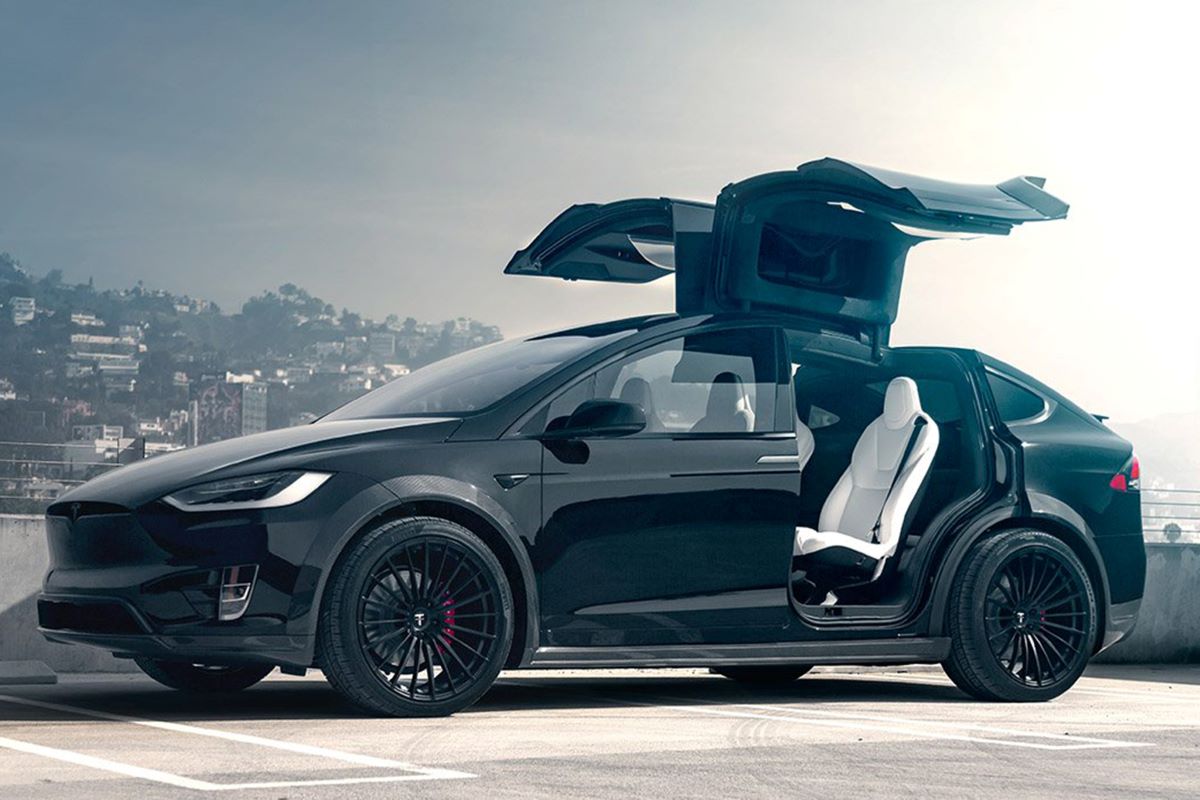
Among the most easily noticeable exterior changes is the addition of a new Frost Blue paint option. This color joins a mostly extra-cost palette; Stealth Grey remains the only no-cost choice, while Frost Blue carries a significant $2,500 premium.
Still, the hue offers a striking contrast to the otherwise subdued color choices available for the Model X. Other updates include newly designed adaptive headlights, and inside the cabin, ambient lighting has become “dynamic,” now capable of executing lighting sequences when occupants enter the vehicle.
Under the surface, Tesla has introduced several minor but meaningful updates. These include revised suspension bushings and hardware that are intended to deliver a smoother ride.
Tesla also claims there is now increased third-row seating space for passengers—alongside an improvement in cargo capacity. It’s unclear how these gains were achieved given that the Model X’s body structure appears unchanged, but a true assessment will have to wait until we can physically evaluate the third-row seating ourselves.
2. Ford Mustang Mach-E
The Mach-E launched with high expectations but has struggled with consistency. Numerous owners report electrical issues, infotainment system malfunctions, charging hiccups, and software bugs.
Ford has issued several recalls and over-the-air fixes, but real-world experiences still show the model can be problematic for those seeking a worry-free ride.
While the Mustang name carries a legacy of power and performance, the 2025 Ford Mustang Mach-E lives up to that reputation with an electric twist all its own. The quickest variants, the GT and Rally, deliver up to 480 horsepower and can rocket from 0 to 60 mph in under 4.0 seconds—quicker than even some V-8–powered versions of the traditional Mustang muscle car.
As an EV, the Mach-E shines as well, offering an impressive 320 miles of driving range in its most efficient configuration, which features a single motor, rear-wheel drive, and the larger Extended battery pack.
Inside, the cabin is equipped with a wealth of convenience features and modern infotainment technology. It provides ample space for four adults and their luggage, and for additional cargo needs, there’s a front trunk that doubles as a cooler—ideal for tailgating or camping.
In the current competitive landscape of electric compact SUVs, the Ford Mustang Mach-E ranks fourth. It sits behind the Hyundai Ioniq 5 N, Hyundai Ioniq 5, and Kia EV6, while still outperforming rivals like the Volkswagen ID.4 and Chevrolet Equinox EV.
Pricing begins at $39,990, making it a strong value option relative to its peers. To help shoppers compare vehicles in this class, Ford has introduced a new tool for side-by-side evaluation.
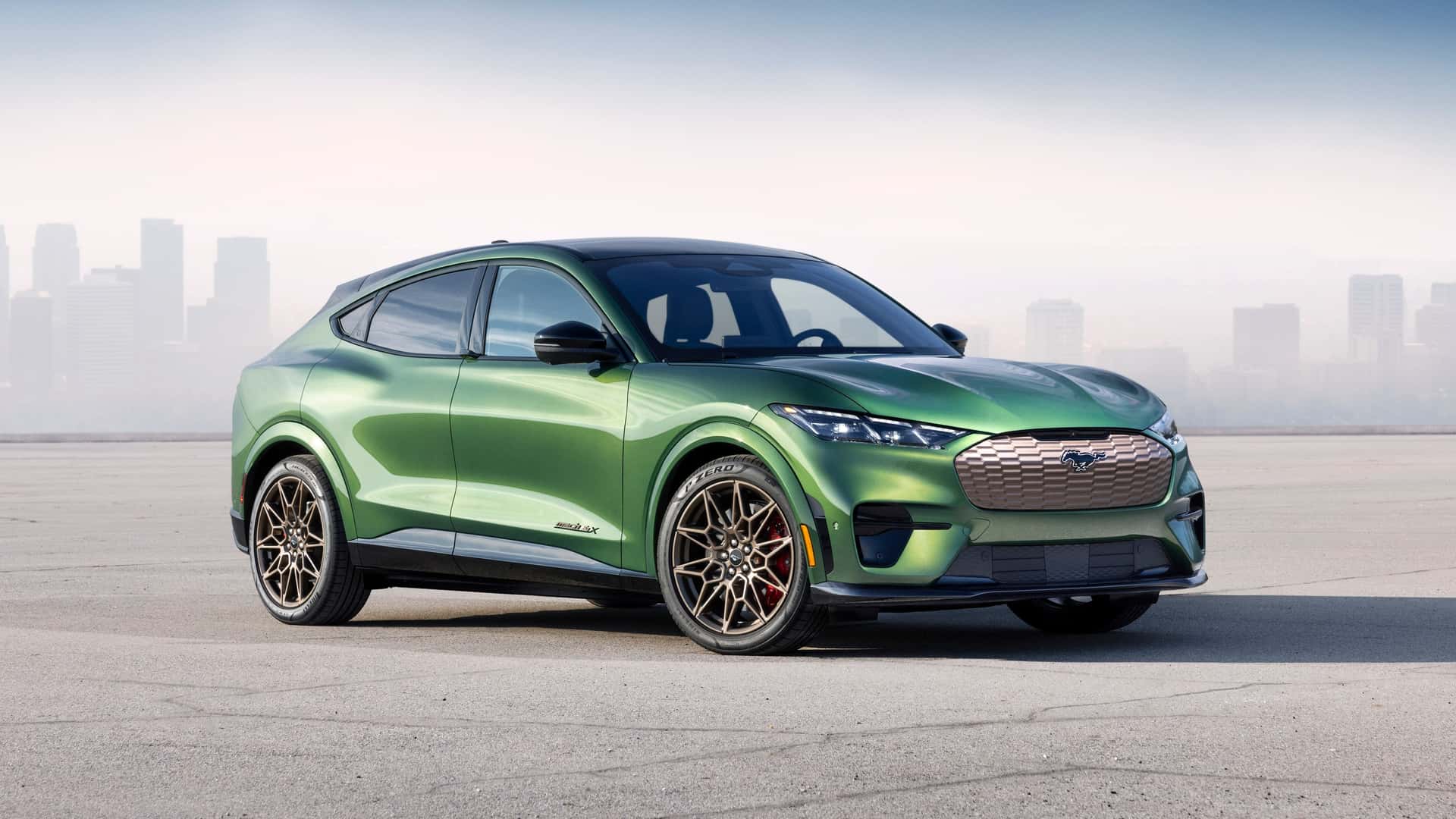
For 2025, Ford has made significant updates across the Mustang Mach-E lineup. Most notably, prices have been cut across all trims. Every model now includes a heat pump as standard equipment, improving both cabin warmth and vehicle performance in colder weather.
Vehicles equipped with Ford’s BlueCruise hands-free driving system now come with enhanced features, including automatic lane changes. A new Sport Appearance package is available for the Premium trim, giving it styling cues similar to the more aggressive GT model.
The infotainment system has also been upgraded: cars with the Connectivity package now benefit from a 5G-powered Wi-Fi hotspot, expanded app access (including YouTube), and enhanced navigation. To top it off, three new paint colors—Molten Magenta Metallic, Velocity Blue Metallic, and Desert Sand—join the lineup, along with three new wheel designs for added personalization.
The Mustang Mach-E starts at $39,990 for the Select trim and climbs to $57,990 for the fully loaded Rally version. The trim breakdown is as follows: Select at $39,990, Premium at $43,990, GT Performance at $55,485, GT at $56,490, and Rally at $57,990. Of all the choices, the Premium trim offers the best balance of features and value. It includes numerous upgrades over the base Select model.
According to Ford, the Premium version can travel up to 320 miles with rear-wheel drive and the extended-range battery. However, we recommend opting for the all-wheel-drive variant for improved traction and overall capability, even though the range dips slightly to an estimated 290 miles.
3. Volkswagen ID.4
Volkswagen’s ID.4 has the makings of a solid EV, but poor software execution undermines its appeal.
Common complaints include buggy infotainment systems, slow system response, unexpected shutdowns, and issues with the car’s advanced safety features. Many owners say they feel like beta testers rather than customers of a finished product.
Volkswagen has received some well-earned criticism in recent years regarding its newest generation of infotainment systems. That said, in ID.4 models featuring the larger 12.9-inch touchscreen display, VW claims it has made notable improvements.
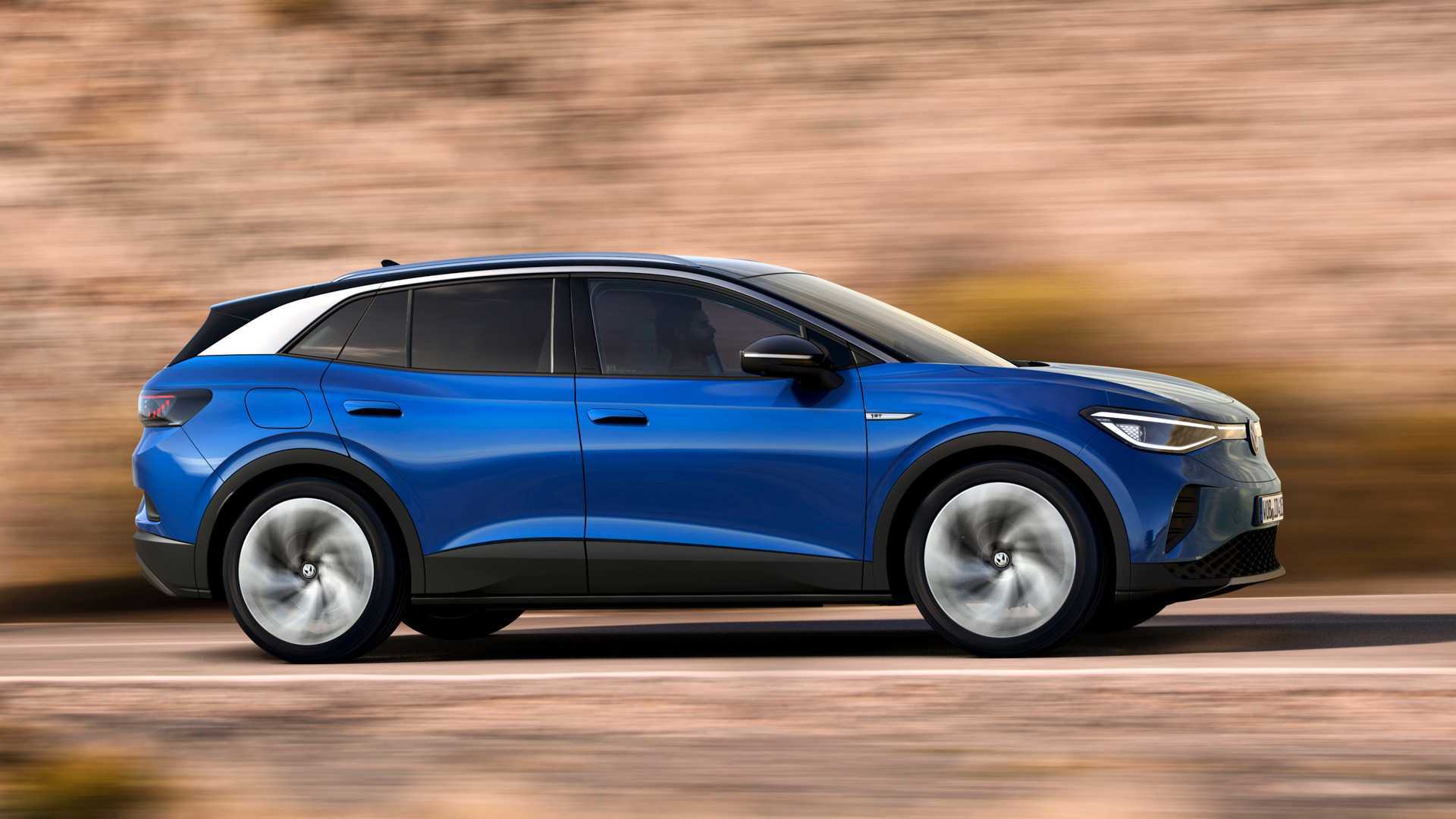
The menus and climate control interfaces have been revised for better usability, and the previously unloved touch-sensitive volume and temperature controls are now illuminated, which makes them far more practical for nighttime use.
It’s also worth mentioning that subscribing to the Plus Speech add-on within VW’s Car-Net connected services can further improve the experience, enabling you to operate various functions through naturally spoken voice commands.
4. Jaguar I-Pace
The Jaguar I-Pace is luxurious and sporty but fails when it comes to reliability.
Persistent issues with charging systems, software bugs, touchscreen responsiveness, and battery cooling systems make it one of the most complained-about EVs.
High repair costs and limited service center availability add to the frustration.
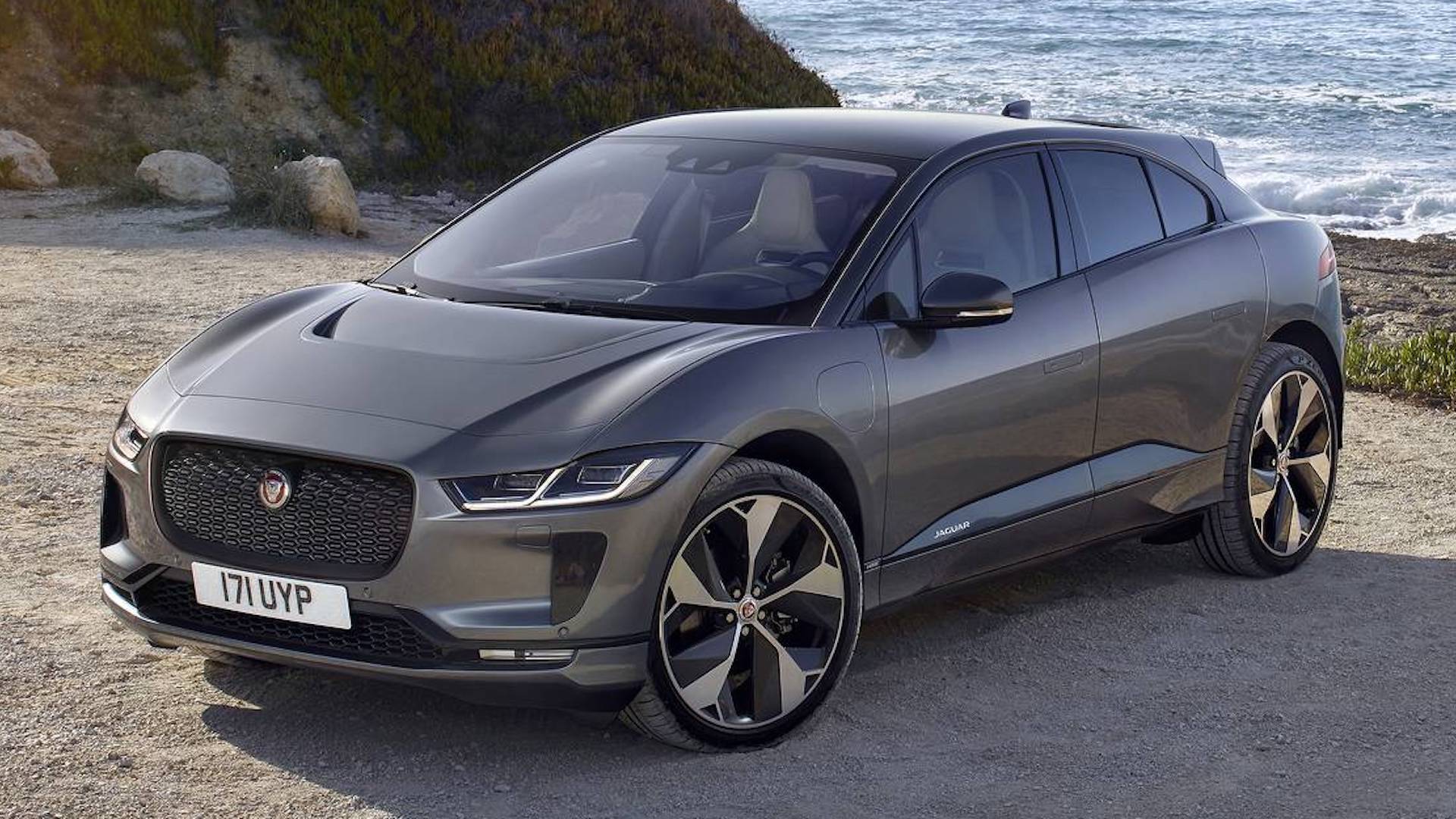
The Jaguar I-Pace stands as one of the earliest luxury electric SUVs from a traditional automaker, and despite entering the market back in 2019, it hasn’t undergone significant changes since its debut.
While the electric vehicle landscape has evolved rapidly, the I-Pace still holds its ground stylistically, even if it appears more familiar than other, more recently introduced EVs in its segment.
What sets the I-Pace apart, however, is its dynamic driving experience. Whereas many EVs feel like they share a common platform with only surface-level distinctions, the I-Pace delivers a uniquely Jaguar feel behind the wheel.
5. Rivian R1T
While Rivian has been praised for innovation and off-road capability, the R1T’s early builds have been riddled with problems. Owners have experienced panel alignment issues, electrical faults, software instability, and occasional drivetrain hiccups.
As a new player in the EV market, Rivian is still working out manufacturing kinks, but it has yet to prove long-term reliability.
When shopping for an EV, it’s tempting to chase performance, range, or tech features. But long-term ownership satisfaction often boils down to reliability and low maintenance.

The 2025 Rivian R1T Quad Max essentially leaves little to be desired when it comes to R1T configurations, as it comes nearly fully equipped right from the start.
Every version includes thoughtful features such as the standard removable flashlight, the lockable gear tunnel designed for storing wet or muddy gear, multiple power outlets, and a versatile rooftop and bedside attachment system.
What sets the R1T Quad Max apart is its four-motor all-wheel-drive system, with individually controlled motors at each wheel—these are now Rivian’s own designs. This setup enables precise torque distribution for better off-road control and optimizes grip on slick or uneven terrain.
Models like the Tesla Model 3 and Hyundai Ioniq 5 shine in this department, while others like the Model X and I-Pace are cautionary tales.
Whether you want peace of mind or are willing to deal with growing pains, knowing which EVs are dependable makes all the difference.

